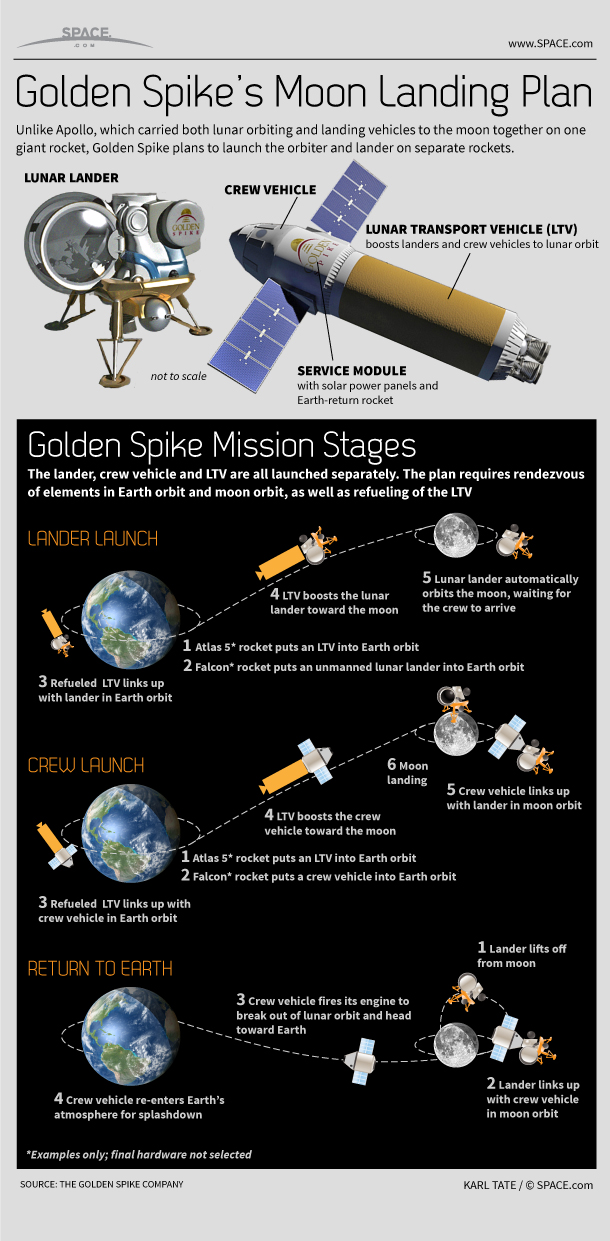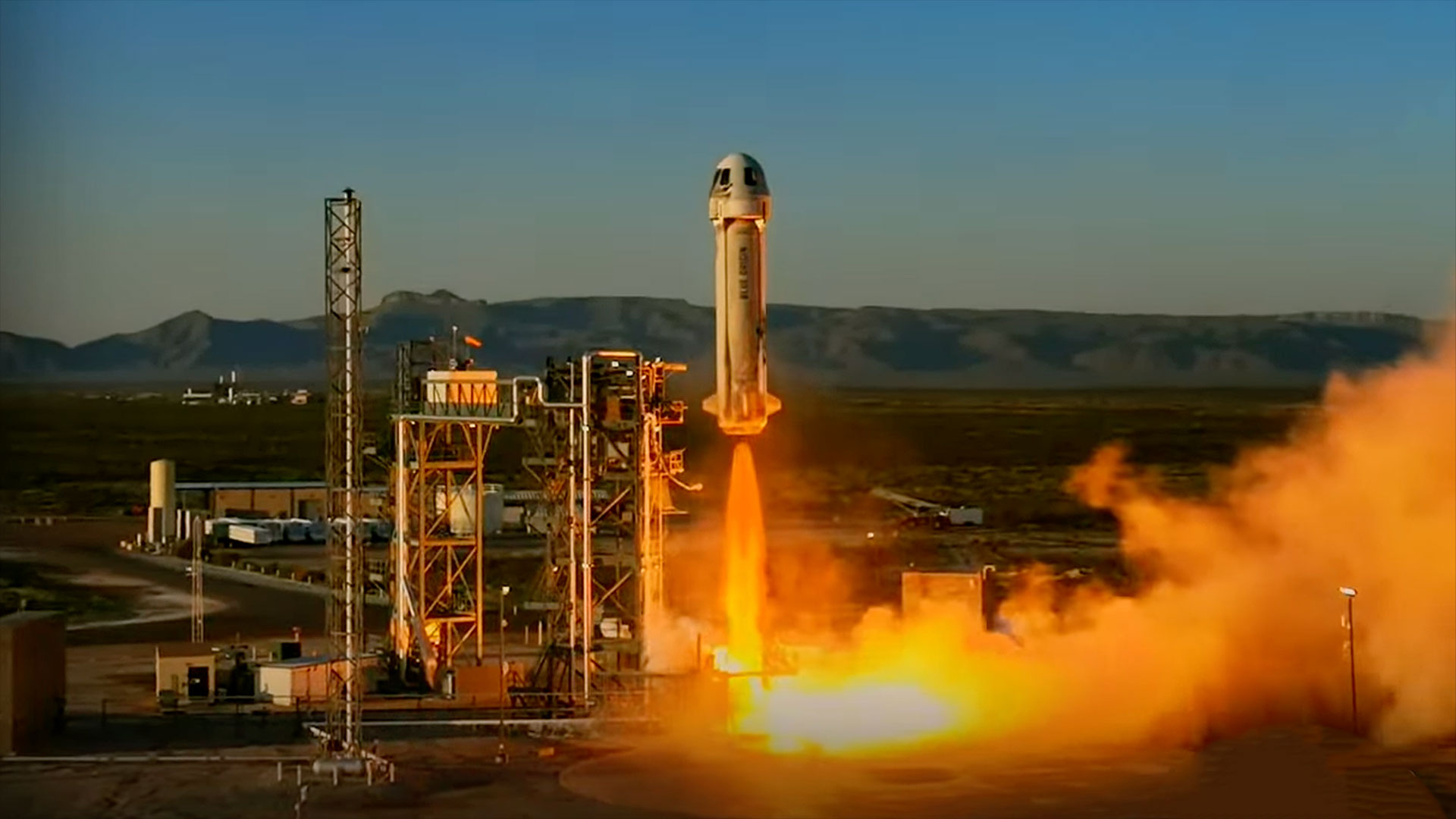How Golden Spike's Moon Landing Plan Works (Infographic)

The Golden Spike Company announced in December 2012 a plan to begin launching commercial passenger flights to the moon by 2020. The flights would cost $1.5 billion each.
The company plans to use existing rocket boosters, but has not chosen a specific vehicle. The module for landing on the moon and the spacesuits that would be worn by the astronauts have yet to be designed.
Unlike the Apollo moon landings of the 1960s and '70s, the Golden Spike plan is to split up the moon lander and crew vehicle, which will be sent on separate rockets. In contrast, the entire Apollo spacecraft, including the Lunar Module, was lofted on a single Saturn 5 booster.
Golden Spike plans to launch the landing vehicle first, placing the unmanned module into a lunar orbit, where it will await its crew.
Later, a crew vehicle carrying up to two paying passengers is launched from Earth. After arriving in lunar orbit, the crew vehicle links up with the lander and the crew transfers for the descent to the surface.
When the lunar surface exploration is done, the astronauts blast off to rendezvous with the orbiting crew vehicle. Once back inside, the crew fires the rockets for the return trip to Earth.
Like the Apollo Command Module, the crew vehicle makes a fiery re-entry into the Earth’s atmosphere and descends on parachutes to a splashdown landing.
Breaking space news, the latest updates on rocket launches, skywatching events and more!

Karl's association with Space.com goes back to 2000, when he was hired to produce interactive Flash graphics. From 2010 to 2016, Karl worked as an infographics specialist across all editorial properties of Purch (formerly known as TechMediaNetwork). Before joining Space.com, Karl spent 11 years at the New York headquarters of The Associated Press, creating news graphics for use around the world in newspapers and on the web. He has a degree in graphic design from Louisiana State University and now works as a freelance graphic designer in New York City.
